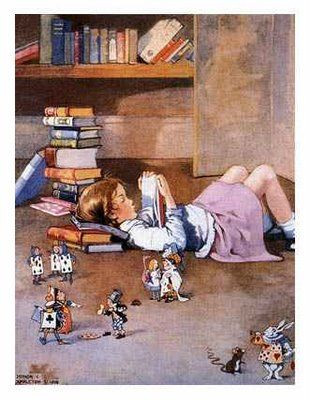Recently, I received a query from some high school teachers at a charter school. They had been using Read 180 with their "remedial readers" and were generally happy with it, except for the really low kids--high school students reading below the third-grade level and they wanted to know if there were better choices for those kids.
I don't have a lot of experience with high school phonics, but what do you do if a student is 7-9 years behind in their reading skills. Ignoring the decoding problems does not make much sense, but what works?
So, when confronted with a question that I know not the answer of, I went to some one with greater expertise on that issue, in this case, Don Deshler of the University of Kansas. To my surprise, he punted, too.
But soon he got back with an answer from the members of his team who deal the most with those kinds of readers. Their response was that overall, the best choice for that situation is Wilson Reading or something like it (they've had "outstanding results with the kinds of kids you are describing").
However, Don pointed out that to be successful it has to be taught 1 on 1 or in very small groups, for about two years.
They also indicated good results with Corrective Reading (SRA), which can be delivered to larger groups, and which is easier to learn and faster to implement than Wilson.
My question is, how many high schools are willing to provide multiple years of remedial instruction, even to moderate sized groups? And how much progress are these kids likely to make? I could imagine a wildly successful program moving kids two years for 1 year instruction, and if you maintained that over a two-year period you would have moved these students to a... fifth grade reading level... Ethically, that is exactly what we should be doing, but tactically, it is a losing proposition for the school (too few kids getting too many resources to make gains that aren't sufficient for needs).
The point of this blog entry is two-fold: first, there are some high schoolers who are going to need very basic, phonics oriented interventions and there are programs like Wilson and Corrective Reading that make sense for such populations; second, the odds against that delivering the outcomes we need are virtually insurmountable--we simply cannot allow kids to reach high school that far behind. Much more needs to be done in upper elementary schools and middle schools.
Some other important points: Don stressed the importance of keeping this kind of instruction upbeat and fast-paced (which makes great sense). He also stressed the inadequacy of computer-based approaches with this kind of instruction (which also registers with me). And, I would add, that while the decoding problems are being addressed, a lot of listening comprehension and vocabulary work needs to be done (so these students don't stagnate intellectually).







Comments
See what others have to say about this topic.